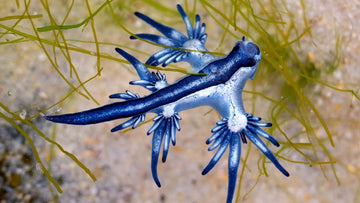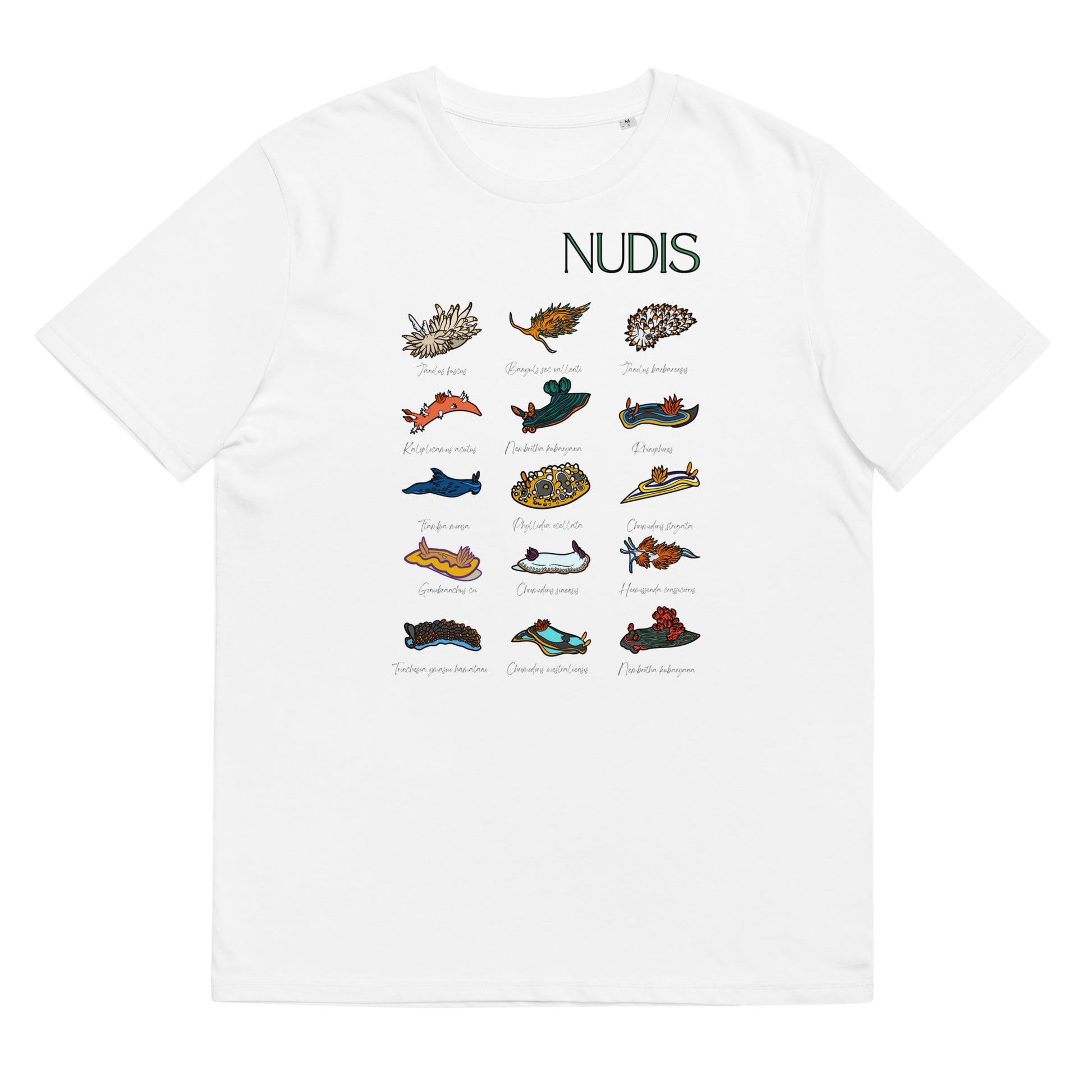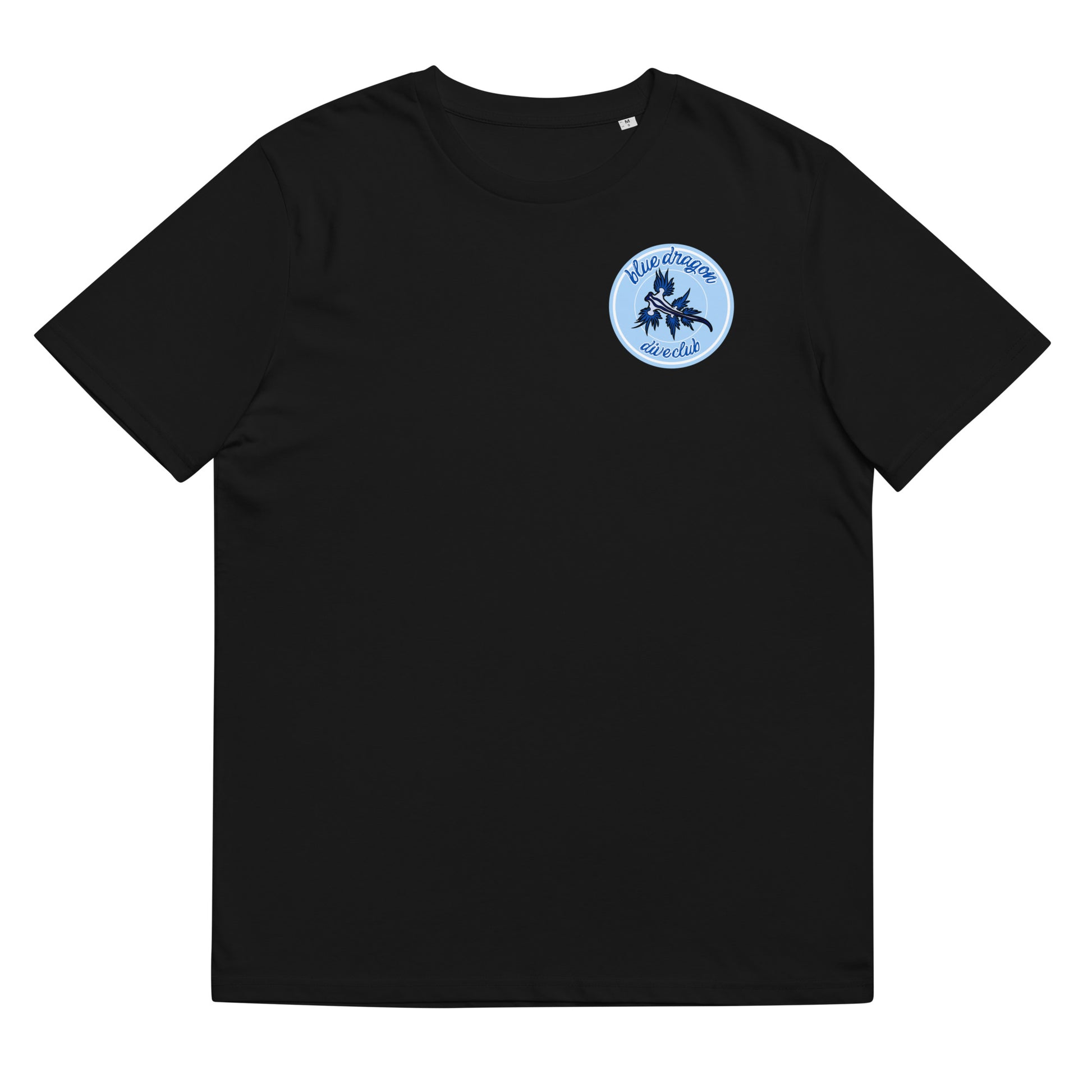If you know us, you know that we are authentic fans of nudibranchs. We have written a lot about nunibranch facts, and we have a dedicated collection for them. Among all our beloved nudibranchs, the Glaucus Atlanticus is our favorite. We love the oddity, incredibly bizarre shapes, psychedelic colors, and Martian-like habits among all nudibranchs. Well, the blue dragon, as this nudibranch is also known, is, for us, the most special. If that can be said of beings as special as nudibranchs. We are so passionate about it that we even have designed a Glaucus Atlanticus t-shirt. Let's see why it's so special.
The Glaucus atlanticus nudibranch belongs to the Glaucidae family, and we know firsthand that it amazes marine biologists and ocean enthusiasts for its unique morphology and behavior among nudibranchs. By the way, its name, Glaucus, comes from the Greek marine deity. Glaucus or Pontius was a fisherman and diver of Boeotia, who after eating a magical herb, leaped into the sea, where he was transformed into a god by Oceanus and Tetis.
T-shirts Designed by Divers for Divers
SEE MORE NUDIBRANCH T-SHIRTSThe first thing that catches your eye about Glaucus atlanticus is its striking intense blue color, making it easily difficult to recognize in its marine environment by predators but also warning of its toxicity to those who see it. The blue on the top of its small body makes it invisible from above in the open sea, confusing it with the blue surface for seabirds, for example, and the bottom of its body, completely white, confuses it with the sky and makes it almost invisible to fish.
Another great oddity of this nudibranch is its kind of fins with fingers that not only give it a unique appearance but also serve an important function. In those "hands," it has organs common in many nudibranch species, called cerata, which allow it to breathe and helps with digestion.
What does Glaucus atlanticus eat?
Unlike other nudibranchs that feed on sponges and corals, this nudibranch has another oddity that fascinates us. Glaucus atlanticus feeds on siphonophores like the highly venomous Portuguese man o' war, the by the by-the-wind sailor (Velella velella), the blue button (Porpita porpita), or the violet sea snail ( Janthina janthina). Through small tentacles located in its mouth, the blue dragon attaches to its prey and can feed on it. From any part of its body.
So we have to thank this small and bizarre nudibranch (it's only 3 cm long), along with sea turtles and the sunfish, for its role as a pest controller of the dreaded Portuguese man o' war.
As it feeds on these toxic creatures, Glaucus atlanticus accumulates in the cerata, in those "fingers," the toxic nematocysts of its prey. These nematocysts become part of the nudibranch's defense, allowing it to release toxins when it feels threatened. This storage and reuse of nematocysts is a common strategy among nudibranchs and demonstrates the exceptional adaptation of Glaucus atlanticus to its environment.
Mugs for Ocean Lovers
SEE MORE MUGS FOR DIVERS
By the way, and to give us an idea of the toxicity of this creature, although it is not dangerous due to its small size, caution should be exercised if you encounter what is called "blue fleet" or numerous groups of Glaucus atlanticus. Contact with these groups can cause hives and itching to swimmers who swim among them. But well, if it's already difficult to come across one, imagine with dozens.
Where does Glaucus atlanticus live?
This nudibranch is a pelagic creature, living in open waters in temperate and tropical oceans, with the Atlantic Ocean, South Africa, Mozambique, and Australia being the most recorded areas. Never in polar regions. Basically, it is a creature at the mercy of surface ocean currents. Yes, exactly like its main prey.
Like the Portuguese man o' war, Glaucus atlanticus accumulates gases inside that allow it to float on the water's surface, propelled by the current and the wind. This leads us to another of its characteristics that makes it one of our favorite nudibranchs. Its geographical distribution, which varies according to water conditions and prey availability, makes it a highly adaptable organism. In that, it is also different from other nudibranchs. It's not an animal that can be found in a specific area of the ocean or reefs like most nudibranchs.
Behavior and reproduction
In terms of reproduction, Glaucus atlanticus is hermaphroditic, meaning each individual has both male and female reproductive organs. During the mating process, two nudibranchs exchange sperm to fertilize each other's eggs. Subsequently, the 16 fertilized eggs are deposited in gelatinous masses that float on the water's surface, where they develop into larvae three days later and then into mature individuals. In fact, eggs have also been found attached to their prey, which they use as a kind of "nursery." A very smart adaptation that allows the next generation to have food and protection for free.
Lastly, it's interesting to note that they are rare nudibranchs, of which very little has been studied in their natural environment, and most of the reproduction information comes from work done in laboratories, so there is still much to learn.
Have you ever encountered a Glaucus atlanticus? If so, comment below with your experience and where; it would be great to have a map of Glaucus nudibranch sightings. By the way, if you've made it this far, you're a lover of these nudis; remember that we have a collection of nudibranch t-shirts with worldwide shipping.

























